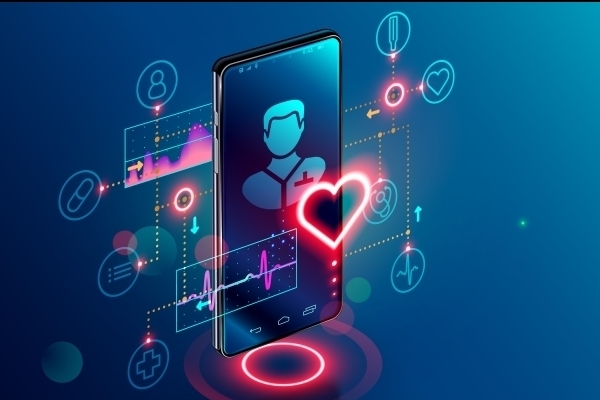1. Introductory lesson
• Introduction to Assistive Technology and eHealth, a description of individual disabilities in relation to assistive technologies
2. eHealthcare / Electronic Information in Assistive Technology
• Standards, terminology, standards for information exchange, usability and evaluation, use of health statistics, differentiation of needs of different health care providers with respect to electronic health records, organization responsibility, measurement methods (from conventional to more advanced), accuracy GDPR
3-4. Basic measurement concepts in assistive technologies
• Position, motion, power, electrical signals, color detection, voice recognition, power consumption, and more
5. Basic concept of feedback technology - biofeedback
• Visual, auditory and vibrational, feedback and communication between different electronic devices
6. Mobile and wearable applications in healthcare
• Understanding and evaluating currently available wearable devices and smartphones and their applications to evaluate and promote health for the health and the disabled, healthcare applications against non-health
7-8. Innovative Healthcare Applications / Software and Hardware
• Rehabilitation engineering including assistive technologies, prostheses and orthotics, medical imaging, biosensors, social networks and communication virtual reality, virtual reality technology and healthcare applications
9. ICT for Enabling Technologies
• Assistive technology for people with hearing, visual impairment and fine motor disorder and in general any motor - paralysis
10. Assistive technology to increase the self-sufficiency of the disabled person
• Mechanical means, electrical equipment for support of daily activities, systems of automation of households
11. Basic knowledge of bioinformatics and informatics in the field of public health
• Application of computing techniques for managing and analyzing biological data, trends influencing the field of medical informatics and their impact on the structure, behavior and interaction of systems that store, process and communicate information.
12. Machine Learning and Data Analysis / Adaptive Tools
• Automatic image enhancement, detection, segmentation, registration and basic information about AI and its application in medical image analyzes, current and future trends in healthcare information technology applications.
13. Clinical Decision Support Systems / Assistive Technology
• Clinical decision-making process, categories of clinical decision support systems, knowledge-based and knowledge-free systems, active, semi-active and passive systems
14. Current trends in eHealthcare and assistive technologies in other applications
• Fitness gadgets, wellbeing
Exercises
• Home automation of lighting, humidity setting
• Position tracking and fall detection - physical activity of persons in the apartment
• Emergency buttons, tracking residents' apartment manifestations
• Monitoring of biological signals for assistive technologies
• ICT for the Disabled
• Organized home rehabilitation with biofeedback
• Fitness gadget
• Testing the practical skills of working with AT in a test apartment.
• Behavioral analysis based on electricity consumption in an apartment
• Introduction to Assistive Technology and eHealth, a description of individual disabilities in relation to assistive technologies
2. eHealthcare / Electronic Information in Assistive Technology
• Standards, terminology, standards for information exchange, usability and evaluation, use of health statistics, differentiation of needs of different health care providers with respect to electronic health records, organization responsibility, measurement methods (from conventional to more advanced), accuracy GDPR
3-4. Basic measurement concepts in assistive technologies
• Position, motion, power, electrical signals, color detection, voice recognition, power consumption, and more
5. Basic concept of feedback technology - biofeedback
• Visual, auditory and vibrational, feedback and communication between different electronic devices
6. Mobile and wearable applications in healthcare
• Understanding and evaluating currently available wearable devices and smartphones and their applications to evaluate and promote health for the health and the disabled, healthcare applications against non-health
7-8. Innovative Healthcare Applications / Software and Hardware
• Rehabilitation engineering including assistive technologies, prostheses and orthotics, medical imaging, biosensors, social networks and communication virtual reality, virtual reality technology and healthcare applications
9. ICT for Enabling Technologies
• Assistive technology for people with hearing, visual impairment and fine motor disorder and in general any motor - paralysis
10. Assistive technology to increase the self-sufficiency of the disabled person
• Mechanical means, electrical equipment for support of daily activities, systems of automation of households
11. Basic knowledge of bioinformatics and informatics in the field of public health
• Application of computing techniques for managing and analyzing biological data, trends influencing the field of medical informatics and their impact on the structure, behavior and interaction of systems that store, process and communicate information.
12. Machine Learning and Data Analysis / Adaptive Tools
• Automatic image enhancement, detection, segmentation, registration and basic information about AI and its application in medical image analyzes, current and future trends in healthcare information technology applications.
13. Clinical Decision Support Systems / Assistive Technology
• Clinical decision-making process, categories of clinical decision support systems, knowledge-based and knowledge-free systems, active, semi-active and passive systems
14. Current trends in eHealthcare and assistive technologies in other applications
• Fitness gadgets, wellbeing
Exercises
• Home automation of lighting, humidity setting
• Position tracking and fall detection - physical activity of persons in the apartment
• Emergency buttons, tracking residents' apartment manifestations
• Monitoring of biological signals for assistive technologies
• ICT for the Disabled
• Organized home rehabilitation with biofeedback
• Fitness gadget
• Testing the practical skills of working with AT in a test apartment.
• Behavioral analysis based on electricity consumption in an apartment
